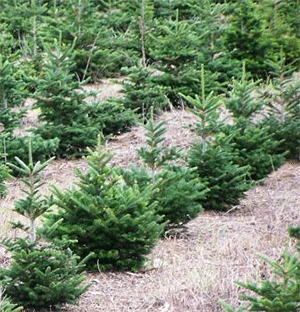By Richard Jauron
The holiday season is almost here, and with it comes Christmas tree season. Having a fresh-cut Christmas tree is a popular tradition, but it can come with some issues regarding proper selection and care. Matching the right tree to the right home environment is crucial.

Iowa State University Extension and Outreach horticulturists can help answer questions about Christmas trees and how to handle them this holiday season. To have additional questions answered, contact the ISU Hortline at 515-294-3108 or hortline@iastate.edu.
What decisions should be made before purchasing a Christmas tree for the holidays?
A few decisions should be made before going out to purchase a Christmas tree. Decide where you are going to place the tree in the home. Be sure to choose a location away from heat sources, such as a fireplace or radiator. Also, decide on the size (height and width) of the tree that you want. Finally, decide where you are going to purchase the tree.
Christmas trees may be purchased from cut-your-own tree farms or as cut trees in commercial lots. A list of tree farms in your area can be found at the Iowa Christmas Tree Growers Association website.
What types of trees are available?
Tree species commonly available at tree farms and commercial lots in Iowa include Scotch pine, white pine, red pine, Fraser fir, balsam fir, Canaan fir, Douglas fir, white spruce and Colorado spruce.
How can I determine the freshness of a cut Christmas tree?
Freshness can be determined with a few simple tests. Gently run your hand over a branch. The needles on a fresh tree will be pliable. Those on a dry tree will be brittle. Another test is to lift the tree by the trunk and lightly bounce the butt on the ground. Heavy needle drop indicates a dry tree. A fresh tree will drop only a few needles.